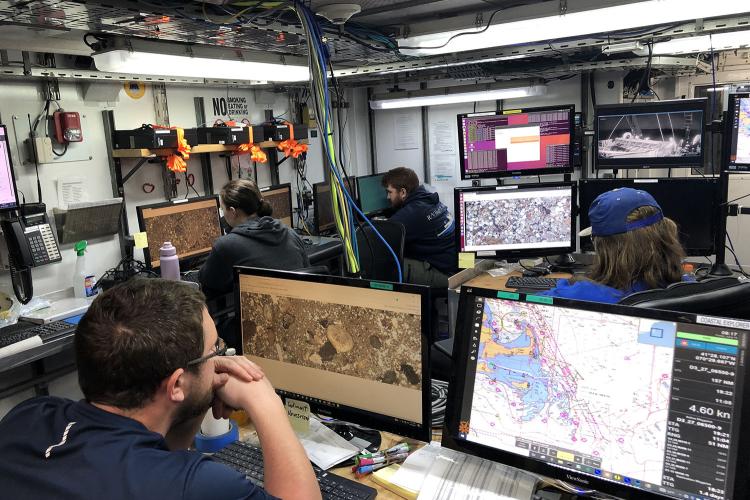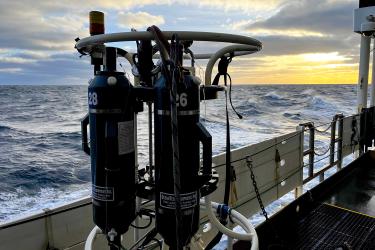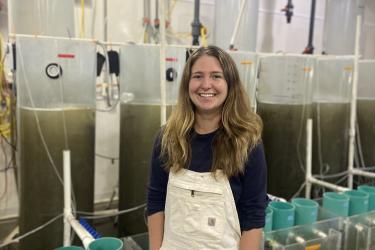We’re about halfway through the final leg of the sea scallop survey aboard the R/V Hugh Sharp, and we hit a little bit of rough weather. We hid around Martha’s Vineyard to wait for the wind and waves to die down. Even though we couldn’t fish, we kept ourselves busy by annotating HabCam pictures, a productive way to pass the time. Some images are a bit tricky so it’s helpful to bounce ideas off others.
After a short sampling respite, we were back at it. Despite a sporadically rainy morning, the weather cooperated for the rest of the trip. If the wind and waves aren’t dangerous, we work outside in the rain, but I don’t mind that. As long as you have a hood on your jacket, the rain simply adds to the ambiance of working on the ocean.
There are a lot of different ocean bottom types, and we saw them all this trip. Sometimes we were in an area with lots of mussel beds. Other times the bottom was carpeted with sand dollars or brittle stars, or there was just a lot of sand or mud.
The mussel tows are the bulkiest catches we dredge up. The byssal threads (thin hair-like fibers that hold the two shells together) from all the mussels bind a lot of mussels, shells, and rocks together, so you may pick up large clumps of mussels and rocks.
On the other hand, fish and scallops can be hidden in the sandy tows. One way to find these animals is to take a clump of sand, smash it down, and spread it around as if you’re painting the sorting table with sand. Otherwise, it would take an extremely long time to sort through the catch. Overall, we try to be as thorough as possible so we don’t miss anything.
But the ground type I haven’t mentioned yet is one that’s covered with scallops. Most think of scallops as being some shade of brown on the top shell and white on the bottom. But there’s a range of colors and patterns in sea scallops. In the collage above, the top left image shows several scallops ranging in color from brown to yellow to purple, showing different types of vertical and arc-like banding. The top right image shows a scallop covered with barnacles. The bottom left image shows an off-white scallop with brown, fuzzy, horizontal arcs. The bottom right image shows a larger white scallop with a Dalmatian appearance caused by tiny cavities covering the top shell.
One of the most exciting catches we had all trip was one with an extremely large number of small scallops. We estimated that in one dredge tow there were more than 40,000 2-year-old scallops! This was the second highest recorded catch of small scallops since 2013, when one tow captured an estimated 60,000 1-year-olds.
Seeing large numbers of small scallops is an indicator of recruitment (growth and survival) and a major reason that it’s so important to do these surveys. Seeing recruitment in certain areas and knowing how scallops grow helps us to sustainably harvest this tasty and prized shellfish.








